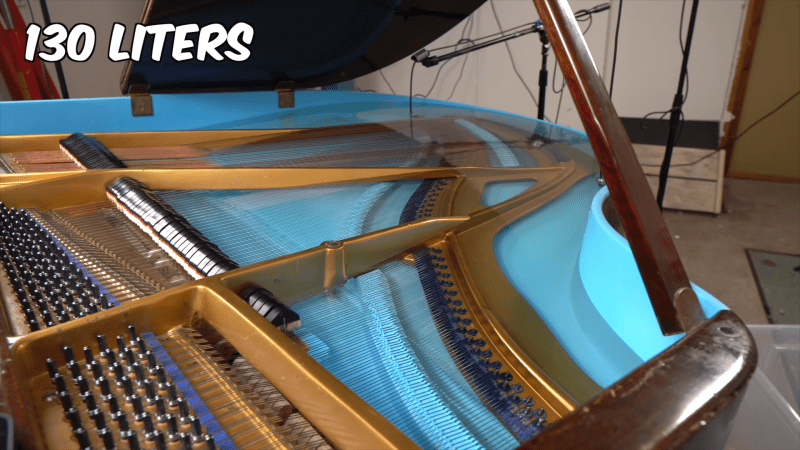Here’s What It Takes to Fill A Piano With Water

Filling a piano with water probably sounds frivolous and asinine to many. However, it also sparks a certain curiosity as to what it would be like. Thankfully, [Mattias] put in the hours of work to find out so we don’t have to!

A first attempt with an upright piano failed quickly. After just four minutes submerged in water, the wooden hammers would seize up as they swelled with moisture.
A grand piano was sourced for a second attempt. The strings were first detensioned to make things easier to work with, and the internal frame pried out from the surrounding piano body. To stop the water pouring out past the keys and strings, a simple solution was implemented: tilting the piano up so the water remained in the body below. A judicious application of various sealing agents was then used to seal the frame. Amazingly, the best information on sealing a piano came from enthusiasts building aquariums out of plywood boxes. Go figure.
The water has a muting effect on the piano’s sound as you might expect. The sound is particularly compelling when heard via underwater mics placed in the water-filled cavity. It almost sounds like a plucked instrument, and gives everything a strangely maritime feel. The sound waves can be seen on the surface of the water, too.
The experiment came to a tragic end when the piano was overfilled, dumping water over the keys and hammers. This caused every key to jam, killing the piano for good.
It’s a fun build, and a very silly one, if you can stand to watch a piano treated in this way. [Mattias] has form in the area of oddball instrument hacks, too, as we’ve previously featured his helium guitar. Video after the break.
Post a Comment